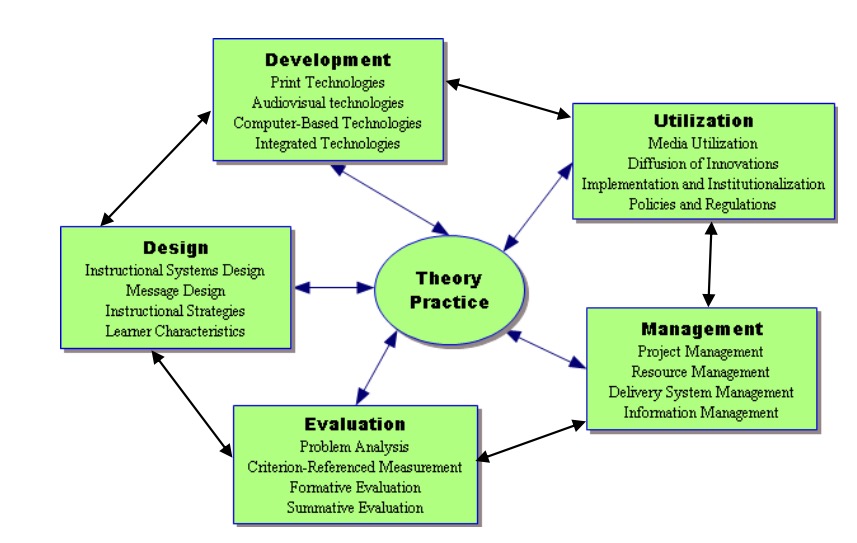Instructional Technology
Instructional Technology
1963
Audiovisual communications is the branch of educational theory and practice concerned with the design and use of messages which control the learning process. It undertakes: (a) the study of the unique and relative strengths and weaknesses of both pictorial and nonrepresentational messages which may be employed in the learning process for any reason; and (b) the structuring and systematizing of messages by men and instruments in an educational environment. These undertakings include planning, production, selection, management, and utilization of both components and entire instructional systems. Its practical goal is the efficient utilization of every method and medium of communication which can contribute to the development of the learners’ full potential [2] – Association for Educational Communications and Technology (AECT)
1970
Instructional technology … is a systematic way of designing, carrying out, and evaluating the total process of learning and teaching in terms of specific objectives, based on research in human learning and communication and employing a combination of human and non- human resources to bring about more effective instruction [3] – President‟s Commission on Instructional Technology (PCIT)
Instructional Technology is the Development (Research, Design, Production, Evaluation, Support-Supply, Utilization) of Instructional Systems Components (Messages, Men, Materials, Devices, Techniques, Settings) and the Management of that development Organization, Personnel) in a systematic manner with the goal of solving educational problems [4]
1982
Instructional technology] is concerned with improving the effectiveness and efficiency of learning in educational contexts, regardless of the nature or substance of that learning. …Solutions to instructional problems might entail social as well as machine technologies [5]
1994
Instructional Technology is the theory and practice of design, development, utilization, management, and evaluation of processes and resources for learning [1] – Association for Educational Communications and Technology (AECT)

1995
The systemic and systematic application of strategies and techniques derived from behavioral and physical sciences concepts and other knowledge to the solution of instructional problems. [6]
2013
Instructional technology includes practical techniques of instructional delivery that systematically aim for effective learning, whether or not they involve the use of media. It is a basic purpose of the field of instructional technology to promote and aid the application of these known and validated procedures in the design and delivery of instruction. [7]
References
- Seels, B. B. & Richey, R. C. (1994). Instructional technology: The definition and domains of the field. Bloomington, IN: Association for Educational Communications and Technology.
- Ely, D.P. (Ed.). (1963). The changing role of the audiovisual process in education: A definition and a glossary of related terms. TCP Monograph No. 1. AV Communication Review, 11(1), Supplement No. 6.
- Commission on Instructional technology. (1970). To improve learning: A report to the President and the Congress of the United States. Washington, D.C.: U.S. Government Printing Office.
- Silber, K. H. (1970). What Field Are We In, Anyhow?. Audiovisual Instr, 15(5), 21-4.
- Cassidy, M. F (1982). Toward integration: Education, instructional technology, and semiotics. Educational Communications and Technology Journal, 20(2), 75–89.
- Gentry, C. G. (1995). Educational technology: A question of meaning. In G. Anglin (Ed.), Instructional technology: Past, present, and future. Englewood, CO: Libraries Unlimited.
- Gagne, R. M. (2013). Instructional technology: foundations. Routledge.
Comments
Post a Comment